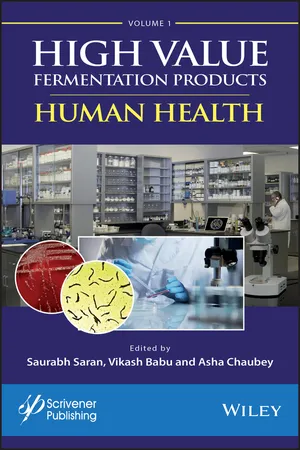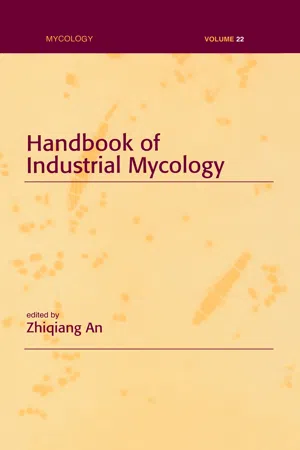Biological Sciences
Echinocandins
Echinocandins are a class of antifungal drugs that work by inhibiting the synthesis of beta-glucan, a key component of the fungal cell wall. They are used to treat invasive fungal infections, particularly those caused by Candida and Aspergillus species. Echinocandins are considered a valuable treatment option due to their broad spectrum of activity and low toxicity.
Written by Perlego with AI-assistance
Related key terms
3 Key excerpts on "Echinocandins"
- eBook - ePub
- Mahmoud A. Ghannoum, John R. Perfect(Authors)
- 2019(Publication Date)
- CRC Press(Publisher)
These agents block fungal cell wall synthesis through inhibition of (1,3)-beta-D-glucan synthase, resulting in fungicidal effects against Candida spp. and fungistatic effects against Aspergillus spp. Echinocandins have also been shown to have some activity, alone or in combination with other agents, against a variety of other fungal pathogens. Several clinical trials have evaluated performance of Echinocandins in the setting of oropharyngeal/esophageal candidiasis and invasive candidiasis. Others have reported experience with Echinocandins as salvage therapy for invasive aspergillosis, and case reports describe efficacy of these agents in the treatment of a variety of other fungal infections. In general, Echinocandins have become preferred agents in the hospital setting for invasive candidiasis because of broad activity against non-albicans Candida as well as Candida albicans infections, while having an excellent safety profile and relative lack of drug interactions. Since they are available only in intravenous form, their use is limited in patients where oral antifungal therapy is preferable. CHEMICAL STRUCTURE AND FORMULATIONS Structurally, Echinocandins are all large lipoprotein molecules containing an amphiphilic cyclic hexapeptide. All three Echinocandins have a unique N -linked acyl lipid side chain, which imparts different physicochemical properties to each agent [ 1, 2 ]. Caspofungin was derived from Glarea lozoyensis, while micafungin and anidulafungin are fermentation by-products of the fungi Coleophoma empetri F-11899 and Aspergillus nidulans, respectively [ 2, 3, 4, 5 ]. Owing to their lipophilicity and large size, Echinocandins have low bioavailability and, therefore, are only available for parenteral (intravenous) delivery. With its fatty acid side chain, caspofungin is soluble in water. Similarly, micafungin is soluble in water due to it complex aromatic side chain. In contrast, anidulafungin is insoluble in water due to its alcoxytriphenyl side chain - eBook - ePub
High Value Fermentation Products, Volume 1
Human Health
- Saurabh Saran, Vikash Babu, Asha Chaubey(Authors)
- 2019(Publication Date)
- Wiley-Scrivener(Publisher)
Glucan, a polysaccharide constituted by glucose monomers linked by (1,3)-β or (1,6)-β bonds, is an essential component of the cell wall [107]. Echinocandins are reported to be potent glucan synthesis inhibitors. The success of the lipopeptide class of glucan synthesis inhibitors has prompted the search for other antifungal agents with improved features over the Echinocandins (lack of oral absorption). Other cyclic peptides like arborcandins have been described as as glucan synthesis inhibitors. These contain a 10-amino-acid ring and two lipophilic tails [108] like FR901469 (macrocyclic lipopeptidolactone) composed of 12 amino acids and a 3-hydroxypalmitoyl moiety [109]. However, besides cyclic lipopeptides, only two other types of glucan synthesis inhibitors are known, the papulacandins and related compounds, and the acidic triterpenes. The papulacandins are glycolipids discovered in the late 1970s [110, 111]. Despite medicinal chemistry efforts, neither papulacandins nor any of their relatives have been developed as drugs, basically due to their limited potency in animal models [112]. The most recently discovered compound class of glucan synthesis inhibitors are triterpenes containing a polar (acidic) moiety [113]. This polar moiety can be a glycoside (in enfumafungin and ascosteroside), a succinate (in arundifungin) or a sulphate-derivative amino acid (in ergokonin A).The main effect of Echinocandins is glucan inhibition of cell wall but a secondary effect is obtained by reduction of ergosterol (Figure 5.3 ) and lanosterol content with increased chitin content. This produces cytological and ultrastructural changes, such as growth of pseudohyphae, thickened cell wall, buds failing to separate from mother cells, cells becoming osmotically sensitive and restriction of lysis to the growing tips of budding cells [114, 115].- Chitin synthesis inhibitors
Chitin is an insoluble polysaccharide made of β-(1,4)-linked N-acetylglucosamine units. This biological polymer is one of the structural microfibrillar components of the fungal cell wall structure which maintains the morphological shape of the cells and plays an essential role in fungal morphogenesis [116]. In yeasts, chitin accounts for 1% of the cell wall and is distributed differently from glucan. Chitin also links covalently to the cellular glucan, thereby strengthening the wall. There are at least three different chitin synthases; chitin synthase I, involved in repair function during cytokinesis; chitin synthase II, playing a role in primary septum formation between mother and daughter cells; and chitin synthase III, synthesizing lateral chitin in the cell wall [117]. Nikkomycins and polyoxins (peptide-nucleoside antimycotic agents) are well-known inhibitors of chitin synthesis [118].- Mannoprotein synthesis inhibitors
Mannoproteins form the outer layer of the cell wall and contain about 50% carbohydrate. The majority of the cell wall mannoproteins are anchored by β-(1,6)- and β-(1,3)-glucan [119] and play several roles in the function of fungal membranes. Inhibitors of the mannoproteins function are the pradimicin/benanomycinfamily, whose chemical structure possesses a benzo [a] naphthacenequinone skeleton [120, 121]. The free carboxyl group of these compounds interacts with the saccharide portion of cell-surface mannoprotein, which disrupts the plasma membrane and causes leakage of intracellular potassium. - eBook - ePub
- Zhiqiang An(Author)
- 2004(Publication Date)
- CRC Press(Publisher)
4 ]. Comparatively speaking, the number of antifungal compounds for which the mechanism of action is known is small. These will be the subject of the remainder of this section.2.1. Cell Wall
One of the targets for novel antifungals under active investigation is the fungal cell wall. Antifungal agents acting on this target are expected to be inherently selective and should have fungicidal features that make them particularly attractive for clinical development. At present, glucan synthesis is the only process of cell wall synthesis that has been used successfully for the development of a new drug product. Glucan is a polysaccharide built of glucose monomers linked by (1,3)-(β or (1,6)-β bonds, and it is an essential component of the cell wall, guaranteeing many of its physical properties [5 ]. Inhibitors of glucan synthesis have been shown to possess antifungal activity in vitro as well as in vivo in many different animal models. The most classic examples of inhibitors of glucan synthesis are the Echinocandins, cyclic hexapeptides N-acylated with an aliphatic chain of different length [6 ]. Structural variants arise from different substitution patterns on the hexapeptide ring or in the fatty acid side chain. Since the first echinocandin was discovered in the early 1970s, many members of the family have been discovered in diverse fungi [6 , 7 ].The pneumocandins, a type of Echinocandins derived from the fermentation of the fungus Glarea lozoyensis, have been successfully used to develop an antifungal drug recently launched in the market. The semisynthetic echinocandin Cancidas is a substituted aza-derivative of pneumocandin B0 (Fig. 2 ). The compound has been shown to be effective in animal models of disseminated candidiasis, aspergillosis, and Pneumocystis carynii pneumonia [7 , 8 ]. Clinical trials have demonstrated that caspofungin is well tolerated and is efficacious in the treatment of esophageal candidiasis [8 , 9 ] as well as in invasive candidiasis [10 ] and aspergillosis [7 , 8
Learn about this page
Index pages curate the most relevant extracts from our library of academic textbooks. They’ve been created using an in-house natural language model (NLM), each adding context and meaning to key research topics.


